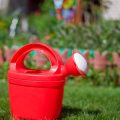Introduction to Smart Low-Maintenance Landscaping
Life can get busy, and spending hours on yard work isn’t always practical. That’s why more homeowners across the U.S. are turning to low-maintenance landscaping paired with smart home technology. This modern approach helps you keep your outdoor space beautiful without all the hard work—perfect for today’s fast-paced American lifestyle.
Low-maintenance landscaping focuses on using plants, materials, and design features that require minimal upkeep. When you combine this with smart technology—like automated irrigation systems or app-controlled lighting—you create an efficient, eco-friendly yard that looks great year-round.
Why Combine Smart Tech with Low-Maintenance Landscaping?
Integrating smart technology into your landscape design not only saves time but also helps conserve water, reduce energy use, and minimize costs in the long run. Here are some of the top benefits:
| Benefit | Description |
|---|---|
| Time-Saving | Automated systems handle watering, lighting, and even lawn care, so you don’t have to. |
| Water Efficiency | Smart irrigation adjusts based on weather and soil moisture, reducing waste. |
| Cost-Effective | Lower utility bills and reduced maintenance costs over time. |
| Sustainability | Eco-friendly practices like native plants and efficient watering promote a greener lifestyle. |
| Convenience | Control outdoor features from your smartphone or voice assistant. |
Designed for the Modern American Homeowner
This style of landscaping fits perfectly into today’s busy lives. Whether youre managing a family household or living solo in an urban setting, smart low-maintenance yards let you enjoy outdoor beauty without extra effort. Plus, it adds curb appeal and value to your home—something every homeowner can appreciate.
2. Choosing Drought-Resistant and Native Plants
One of the easiest ways to create a low-maintenance yard that works well with smart home technology is by selecting drought-resistant and native plants. These plants naturally thrive in your local climate, meaning they need less water, fewer fertilizers, and minimal upkeep. When paired with smart irrigation systems, you can automate watering schedules based on real-time weather data, saving time and resources.
Why Native and Drought-Resistant Plants Work Best
Native plants have adapted over centuries to the local environment. They are more resistant to pests and diseases, require less water, and support local wildlife like bees and butterflies. Drought-tolerant plants are ideal for regions with dry spells or homeowners looking to reduce water bills.
Benefits of Using These Plants:
- Lower water usage
- Less need for pesticides or fertilizers
- Minimal pruning or trimming
- Support for local ecosystems
Examples of Regional Plant Choices
Here’s a quick guide to some popular drought-tolerant and native plants based on U.S. regions:
| Region | Native/Drought-Tolerant Plants |
|---|---|
| Southwest (e.g., Arizona, New Mexico) | Agave, Desert Marigold, Red Yucca |
| Southeast (e.g., Florida, Georgia) | Coontie Palm, Beautyberry, Coreopsis |
| Northeast (e.g., New York, Pennsylvania) | Black-Eyed Susan, Joe-Pye Weed, Eastern Red Columbine |
| Midwest (e.g., Illinois, Ohio) | Purple Coneflower, Prairie Dropseed, Butterfly Milkweed |
| West Coast (e.g., California, Oregon) | California Poppy, Manzanita, Toyon |
Integrating Smart Technology with Plant Selection
Smart irrigation systems like Rachio or RainMachine allow you to program watering schedules tailored to plant types and soil conditions. When you use native or drought-tolerant plants that don’t need frequent watering, these systems become even more efficient—often skipping cycles during rain or cooler days automatically.
Tips for Getting Started:
- Visit a local nursery to find native plant varieties specific to your area.
- Group plants with similar water needs together for better efficiency.
- Use mulch around plant beds to retain soil moisture and reduce weeds.
- Sync your smart irrigation system with a weather app for optimal performance.
Selecting the right plants not only supports a low-maintenance lifestyle but also enhances the effectiveness of your smart landscaping technology.
![]()
3. Smart Irrigation Systems and Soil Sensors
Smart irrigation systems and soil moisture sensors are game-changers for homeowners looking to create a low-maintenance landscape that works seamlessly with smart home technology. These tools help reduce water waste, lower utility bills, and keep your yard healthy—without the constant need for manual watering or guesswork.
Why Choose Smart Irrigation?
Traditional sprinkler systems run on fixed schedules, often watering even when it rains or when the soil is already moist. Smart irrigation systems connect to Wi-Fi and use real-time weather data, soil conditions, and plant needs to adjust watering schedules automatically. This means your lawn and garden get just the right amount of water—no more, no less.
Benefits of Soil Moisture Sensors
Soil sensors work by measuring how much moisture is in the ground. When paired with smart irrigation systems, they provide precise feedback that tells your sprinklers when to turn on or stay off. This prevents overwatering, which can lead to root rot, fungus growth, and wasted resources.
Key Features to Look For
| Feature | Description |
|---|---|
| Wi-Fi Connectivity | Allows remote control via smartphone apps |
| Weather Integration | Adjusts watering based on local forecasts |
| Zone Customization | Water different areas based on plant type and sun exposure |
| Soil Sensor Compatibility | Works with moisture sensors for real-time adjustments |
| Voice Control Support | Integrates with Alexa, Google Assistant, or Siri |
Popular Smart Irrigation Brands in the U.S.
- Rachio: Known for easy setup and advanced scheduling features.
- RainMachine: Offers open-source software and real-time weather updates.
- B-hyve by Orbit: Budget-friendly option with strong app support.
Integrating smart irrigation systems and soil sensors into your landscaping not only saves time but also supports sustainability by reducing unnecessary water usage. Its an easy upgrade that pays off in both convenience and healthier plants.
4. Using Smart Lighting for Outdoor Spaces
Smart outdoor lighting is a game-changer for low-maintenance landscaping. It not only improves your home’s curb appeal but also boosts security and saves energy. With smart home technology, you can automate when your lights turn on and off, adjust brightness levels, and even change colors to suit the mood or season—all with just a few taps on your smartphone.
Benefits of Smart Outdoor Lighting
| Feature | Benefit |
|---|---|
| Programmable Schedules | Lights turn on/off automatically based on time or sunset/sunrise settings |
| Motion Sensors | Enhances security by turning on lights when movement is detected |
| Energy Efficiency | LED bulbs and automation reduce electricity usage |
| Remote Control | Control lighting from anywhere using a smartphone or voice assistant |
| Scene Settings | Create custom lighting scenes for entertaining or relaxing evenings outdoors |
Popular Smart Lighting Options for Landscapes
You can find a variety of smart lighting solutions that are perfect for gardens, walkways, patios, and driveways. Many are designed to be weather-resistant and integrate easily with platforms like Amazon Alexa, Google Assistant, or Apple HomeKit.
- Smart Path Lights: Illuminate walkways while adding charm and safety.
- Spotlights: Highlight trees, shrubs, or architectural features.
- String Lights: Ideal for patios or pergolas to create a cozy ambiance.
- Floodlights with Cameras: Combine lighting and security in one device.
Installation Tips
If youre looking for the easiest setup, go with solar-powered smart lights—they don’t require wiring and can be placed almost anywhere with sunlight access. For more advanced systems that connect to your home’s Wi-Fi, consider hiring a professional to ensure proper installation and integration with your existing smart home devices.
5. Automated Lawn Care and Maintenance Tools
Keeping your yard looking great doesn’t have to mean spending your weekends mowing, raking, or watering. With the help of smart home technology, you can now automate many of these tasks using tools designed to work seamlessly with your landscaping setup. These gadgets not only save time but also keep your outdoor space neat and healthy all year long.
Robotic Lawn Mowers
Robotic mowers are like Roombas for your lawn. Once set up, they can mow your grass on a schedule you choose, automatically returning to their charging station when the job is done or when battery levels are low. Many models connect with smart home systems, letting you control them via smartphone apps or voice assistants like Alexa or Google Assistant.
| Feature | Benefit |
|---|---|
| Smart Scheduling | Mow at optimal times with minimal noise |
| Weather Sensors | Avoid mowing in rain or extreme conditions |
| GPS Navigation | Efficient route planning and zone coverage |
Leaf and Debris Sensors
Fallen leaves can quickly make a yard look messy and block sunlight from reaching grass and plants. Smart leaf sensors detect buildup and can trigger alerts or even activate connected devices like robotic vacuums or blowers to remove debris. This keeps your landscape tidy without constant attention.
Smart Irrigation Controllers
While not directly related to lawn cutting, irrigation systems that respond to real-time weather data and soil moisture levels help maintain a lush lawn without wasting water. These systems adjust watering schedules automatically and can be controlled through mobile apps.
| Tool | Main Function | Smart Feature |
|---|---|---|
| Robotic Mower | Mows lawn automatically | App control, GPS, scheduling |
| Leaf Sensor | Detects leaf buildup | Sends alerts or triggers cleaning tools |
| Smart Sprinkler Controller | Waters lawn as needed | Weather-based adjustments, app control |
Choosing the Right Tools for Your Yard
Selecting the right automated tools depends on the size of your yard, the type of grass you have, and how tech-savvy you want your system to be. Start small with one smart tool and expand as you get comfortable integrating more devices into your home network.
6. Tips for Seamless Integration with Smart Home Hubs
Integrating your low-maintenance landscaping with your existing smart home system can make managing your outdoor spaces easier and more efficient. Whether youre using Amazon Alexa, Google Home, or Apple HomeKit, getting your smart sprinklers, lights, and sensors connected to a centralized hub helps you control everything from one place.
Start with Compatible Devices
Before purchasing any smart landscaping gadgets, check if they’re compatible with your home automation hub. Many popular brands now include compatibility labels on their packaging or product descriptions. Look for phrases like “Works with Alexa,” “Google Assistant enabled,” or “HomeKit compatible.”
Common Smart Landscaping Features and Hub Compatibility
| Smart Feature | Works With Alexa | Works With Google Assistant | Works With Apple HomeKit |
|---|---|---|---|
| Smart Irrigation Controller | ✔️ | ✔️ | ✔️ |
| Outdoor Smart Lighting | ✔️ | ✔️ | ✔️ |
| Weather Sensors | ✔️ | ✔️ | ⚠️ (limited) |
| Soil Moisture Monitors | ✔️ | ✔️ | ⚠️ (check brand) |
Create Automation Routines
Your smart hub likely allows you to create routines or scenes—automated actions based on time, weather, or sensor data. For example, set your irrigation system to skip watering when rain is detected by a connected weather sensor. Or create an evening routine that turns on pathway lights and adjusts your patio lighting at sunset.
Use Voice Commands for Easy Control
If your devices are properly integrated, you can manage your landscape features hands-free. Try commands like:
- “Alexa, turn on the garden lights.”
- “Hey Google, start backyard watering.”
- “Siri, check soil moisture in front yard.”
Troubleshooting Connection Issues
If a device isn’t responding as expected, make sure it’s on the same Wi-Fi network as your hub and has the latest firmware update. Also check app permissions and integrations through the hub’s mobile app.
Avoid Overcomplication
The goal of integrating smart tech into your landscaping is to make life easier—not more confusing. Stick to features that truly help reduce maintenance tasks, like automated watering or lighting schedules. You don’t need every possible gadget; just choose what fits your lifestyle and yard setup.
By choosing compatible devices and setting up smart routines, you can enjoy a low-maintenance yard that practically runs itself—all from the palm of your hand or a simple voice command.


